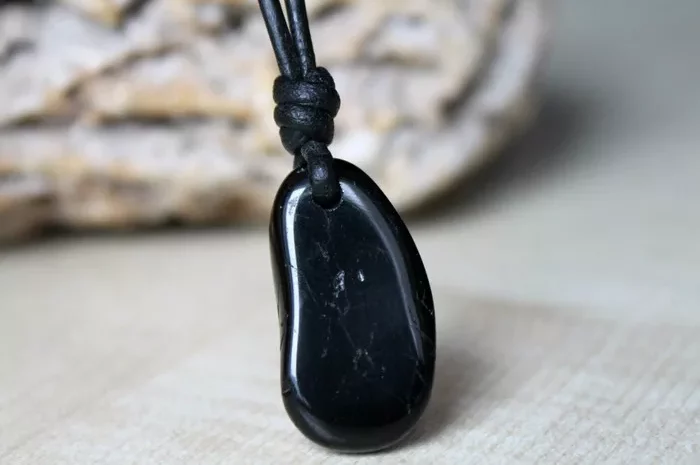Tourmaline, with its mineral name of tourmaline (Tourmaline) derived from the Sinhalese word “Turmali,” meaning “mixed gemstone,” is a beautiful and versatile gem. This gemstone boasts an impressive array of colors, including red, green, blue, and even black, covering a wide spectrum that totals over one hundred shades. Among these, black tourmaline stands out due to its unique appearance and energy properties. In this article, we will delve into the question of whether black tourmaline can be polished, exploring the process, considerations, and results in a detailed and accessible manner.
Understanding Black Tourmaline
Before discussing polishing, it’s essential to understand the basics of black tourmaline. Black tourmaline, like other tourmaline varieties, belongs to the borate silicate minerals. It’s characterized by its complex crystal structure and high hardness, typically ranging from 7 to 7.5 on the Mohs scale. This hardness makes it a durable gemstone suitable for jewelry making.
Black tourmaline occurs naturally in various shades of black, often with internal inclusions such as tiny crystals or fractures. These inclusions can give the gemstone a unique appearance, but they can also make polishing more challenging.
The Process of Polishing Tourmaline
Polishing tourmaline, including black tourmaline, involves a series of meticulous steps aimed at enhancing its natural beauty and clarity. Here’s a detailed look at the process:
1. Preparation and Initial Grinding
The first step in polishing tourmaline is preparing the gemstone for the process. This includes cleaning the surface to remove any dirt or debris. Once clean, the gemstone undergoes an initial grinding stage known as “roughing out.”
During roughing out, the gemstone is shaped into its desired form using coarse abrasives. This stage removes excess material and creates the basic outline of the gemstone. For black tourmaline, this process is crucial as it helps to flatten the surface and prepare it for further refinement.
2. Fine Grinding and Sanding
Once the rough shape is achieved, the gemstone enters the fine grinding and sanding stage. Here, finer abrasives are used to smooth out the surface and refine the gemstone’s shape. This stage is iterative, with progressively finer abrasives used to achieve a smoother surface.
For black tourmaline, this stage is particularly important due to its hardness. The gemstone requires careful handling to avoid scratching or damaging its surface. Fine grinding and sanding help to create a uniform texture and prepare the gemstone for polishing.
3. Polishing
The polishing stage is where the gemstone truly shines. Polishing involves using a combination of abrasives, polishing compounds, and water to create a smooth, reflective surface. For black tourmaline, the polishing process is delicate and requires a specific set of skills and tools.
Polishing compounds commonly used for tourmaline include diamond powder, cerium oxide, and tin oxide. These compounds are applied to a rotating wheel or pad, which is then used to gently buff the gemstone’s surface. The polishing process removes any remaining scratches or imperfections, leaving a smooth, polished surface.
4. Final Inspection and Finishing
After polishing, the gemstone undergoes a final inspection to ensure it meets quality standards. This inspection includes checking for scratches, cracks, or other imperfections. If any are found, the gemstone may be sent back for additional polishing.
Once the gemstone passes inspection, it is cleaned and prepared for setting. This may involve treating the gemstone with various finishes, such as waxing or oiling, to enhance its appearance and durability.
Considerations for Polishing Black Tourmaline
While black tourmaline can be polished, there are several considerations to keep in mind:
1. Hardness and Brittleness
Black tourmaline’s hardness and brittleness make it prone to chipping or cracking during polishing. As such, it requires careful handling and a gentle approach to avoid damaging the gemstone.
2. Inclusions and Fractures
Black tourmaline often contains internal inclusions and fractures. These features can add to the gemstone’s unique appearance but can also make polishing more challenging. Polishing compounds and techniques must be carefully selected to avoid exacerbating these features.
3. Color and Clarity
The color and clarity of black tourmaline can vary widely. Some gemstones may have a deep, solid black color, while others may have lighter shades or internal reflections. Polishing can enhance the gemstone’s color and clarity, but it’s important to keep in mind that the final appearance will depend on the gemstone’s natural characteristics.
Results and Benefits of Polishing
Polishing black tourmaline can provide several benefits:
1. Enhanced Appearance
Polishing removes scratches, imperfections, and dullness, leaving the gemstone with a smooth, reflective surface. This enhances the gemstone’s appearance and makes it more appealing to consumers.
2. Improved Durability
Polishing also helps to strengthen the gemstone’s surface, making it more resistant to scratches and wear. This improved durability ensures that the gemstone will retain its beauty and value over time.
3. Better Light Reflection
A polished surface reflects light more evenly, creating a more vibrant and eye-catching appearance. This can enhance the gemstone’s visual impact and make it more noticeable in jewelry settings.
Conclusion
In conclusion, black tourmaline can be polished to enhance its appearance, durability, and light reflection. The polishing process involves a series of meticulous steps, including preparation, grinding, sanding, and polishing, each requiring careful handling and specific skills. While black tourmaline’s hardness and brittleness make it prone to chipping or cracking, careful polishing can produce a beautiful, high-quality gemstone suitable for jewelry making.
Related topic:
- The Relationship Between Green Tourmaline and Taurus
- Green Tourmaline vs. Olivine: Which is More Suitable for Daily Wear?
- Green Tourmaline or Black Tourmaline: Which is More Suitable for Daily Wear?


